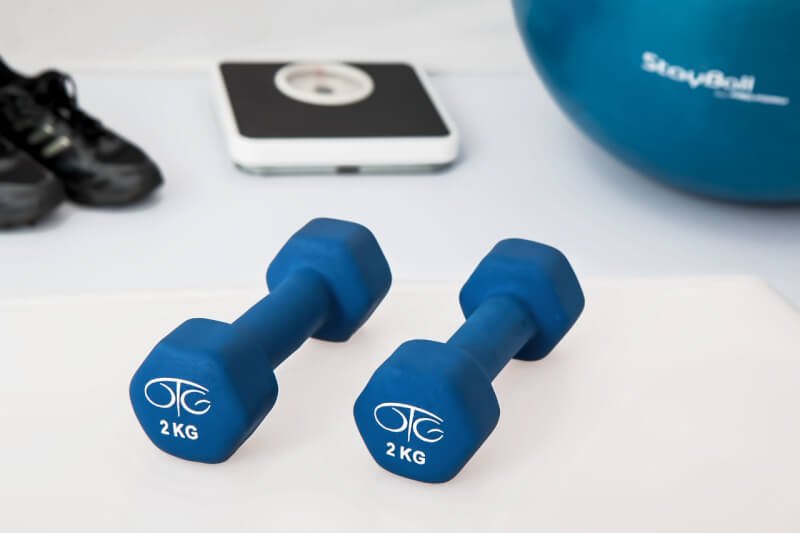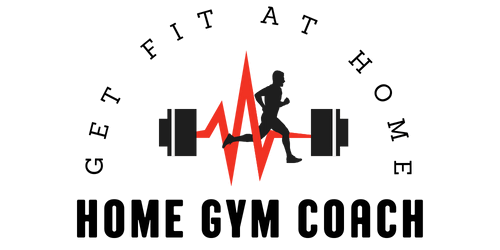Are you tired of feeling drained and lacking motivation during your workouts? Look no further! In this article, discover the power of custom workout plans designed specifically to boost your energy levels and enhance your endurance. Say goodbye to feeling exhausted and hello to newfound vitality as you embark on a fitness journey tailored to your unique needs and goals. Get ready to unleash your inner athlete and achieve the level of fitness you’ve always dreamed of!

1. Importance of Energy and Endurance
1.1 Understanding Energy and Endurance
Energy and endurance are two key components of overall fitness and well-being. Energy refers to the ability to exert effort and perform physical activities, while endurance is the measure of how long you can sustain that effort. Both energy and endurance play a crucial role in maintaining a healthy lifestyle and achieving personal fitness goals.
1.2 Benefits of Improving Energy and Endurance
Improving your energy and endurance levels can bring about a multitude of benefits. First and foremost, having higher energy levels allows you to tackle daily tasks with greater ease and efficiency. Whether it’s completing household chores or meeting work deadlines, having ample energy will undoubtedly improve your productivity and overall quality of life.
Furthermore, enhanced endurance enables you to engage in physical activities for longer periods of time. This can greatly enhance your performance in sports or recreational activities, as well as improve your cardiovascular health. Regular endurance training also helps to strengthen your heart and lungs, reducing the risk of heart disease and other chronic illnesses.
1.3 Potential Roadblocks to Energy and Endurance
While energy and endurance are desirable traits, there are several roadblocks that can hinder their development. Lack of physical activity, poor nutrition, and inadequate rest can all contribute to low energy levels and reduced endurance. Additionally, certain medical conditions or medications may also impact your energy and endurance levels.
Understanding these potential roadblocks is crucial to devising an effective plan for boosting energy and endurance. By addressing these obstacles, you can maximize your efforts and achieve desired results.
2. Assessing Your Current Fitness Level
2.1 Medical Consultation
Before embarking on any fitness journey, it is vital to consult with a healthcare professional. A medical consultation will help identify any underlying health conditions or concerns that may impact your energy and endurance levels. This step is especially important if you have a pre-existing condition or if it has been a while since you engaged in regular physical activity.
During your consultation, be prepared to discuss your medical history, current fitness level, and any symptoms or concerns you may have. This information will enable your healthcare provider to give you personalized advice and ensure that you follow a safe and effective fitness plan.
2.2 Physical Fitness Test
Once you have received medical clearance, the next step is to assess your current fitness level through a physical fitness test. This test will provide valuable insight into your cardiovascular fitness, muscular strength, and flexibility. There are various assessments available, such as the 1-mile walk/run test, push-up test, and sit-and-reach test, which can be conducted at home or with the guidance of a fitness professional.
By evaluating your current fitness level, you can establish a baseline and track your progress as you work towards improving your energy and endurance.
2.3 Taking Measurements and Assessments
In addition to the physical fitness test, it is helpful to take measurements and assessments to further assess your current fitness level. Taking measurements, such as body weight, body fat percentage, and waist circumference, can provide additional data points to track your progress.
Furthermore, consider conducting assessments such as the Borg Rating of Perceived Exertion (RPE) scale, which measures your perceived effort during physical activity. This scale allows you to gauge your exertion level and adjust your workouts accordingly.
By combining the results of your physical fitness test, measurements, and assessments, you will have a comprehensive understanding of your current fitness level. This information will guide you in setting realistic goals and designing a customized plan to improve your energy and endurance.
3. Goal Setting and Planning
3.1 Identifying Your Goals
Setting clear and specific goals is essential for long-term success in improving energy and endurance. Start by identifying what you hope to achieve and the timeframe in which you want to accomplish it. Consider both short-term goals, such as increasing your workout duration by 10 minutes in a month, and long-term goals, such as completing a half marathon within a year.
When setting your goals, be sure to align them with your personal preferences and interests. Choosing activities that you enjoy will increase your motivation and make the process more enjoyable.
3.2 Setting SMART Goals
To ensure your goals are meaningful and manageable, follow the SMART goal-setting framework. SMART stands for Specific, Measurable, Achievable, Relevant, and Time-bound. This framework will help you create goals that are clear, trackable, realistic, and bound by a specific timeframe.
For example, instead of setting a vague goal like “improve endurance,” a SMART goal would be “increase the duration of running without stopping from 10 minutes to 20 minutes within two months.”
3.3 Creating a Customized Plan
Once your goals are established, it’s time to create a customized plan that addresses your specific needs and preferences. Consider factors such as your current fitness level, available time, and access to equipment or facilities.
Divide your plan into phases, with each phase focusing on a specific aspect of energy and endurance. For instance, you may start with a phase dedicated to building cardiovascular endurance through aerobic exercises, followed by a phase incorporating strength training to improve overall muscle stamina.
Customize your plan further by selecting exercises and activities that align with your interests and preferences. This will make your workouts more enjoyable and increase your chances of sticking to the plan.
4. Targeted Exercises for Energy and Endurance
4.1 Aerobic Exercises
Aerobic exercises, also known as cardio, are crucial for improving energy and endurance. These exercises elevate your heart rate and get your blood pumping, improving your cardiovascular fitness.
Common aerobic exercises include running, cycling, swimming, and brisk walking. Aim for at least 150 minutes of moderate-intensity aerobic activity or 75 minutes of vigorous-intensity activity per week. Gradually increase the duration and intensity of your aerobic workouts to continue challenging your body and improving your endurance.
4.2 High-Intensity Interval Training (HIIT)
High-Intensity Interval Training (HIIT) is a form of exercise that alternates between intense bursts of activity and short recovery periods. HIIT workouts are highly effective for improving both energy and endurance.
These workouts can be tailored to individual fitness levels and preferences, involving exercises such as sprints, burpees, jump squats, and mountain climbers. Start with shorter intervals and gradually increase the intensity and duration as your fitness improves. Incorporating HIIT sessions into your weekly workout routine will boost your energy and enhance your overall endurance.
4.3 Strength Training
Strength training is often overlooked when it comes to improving energy and endurance, but it plays a crucial role in overall fitness. Building muscle strength enhances your ability to perform daily activities with ease and reduces fatigue.
Include strength training exercises in your routine, focusing on major muscle groups such as the legs, arms, chest, back, and core. Exercises like squats, lunges, push-ups, and deadlifts provide a well-rounded strength training workout. Aim for two to three sessions per week, allowing adequate recovery time between workouts.
4.4 Core and Stability Exercises
Core and stability exercises are vital for maintaining proper posture and balance, which are essential for sustaining energy and endurance during physical activities. These exercises target the muscles in your abdomen, lower back, and hips.
Planks, Russian twists, bird dogs, and bridges are examples of effective core and stability exercises. Include them in your routine two to three times a week for optimal results.
4.5 Flexibility and Stretching
Flexibility and stretching exercises are often overlooked, but they are equally important for improving energy and endurance. Incorporating stretching routines into your workouts or dedicating separate sessions to stretch will enhance your overall mobility and prevent injuries.
Make sure to stretch all major muscle groups, holding each stretch for 15-30 seconds and repeating each stretch 2-4 times. Yoga and Pilates are also excellent options for improving flexibility while promoting relaxation and stress reduction.

5. Balancing Cardiovascular and Strength Training
5.1 Designing a Balanced Workout Routine
Balancing cardiovascular and strength training is crucial to optimize energy and endurance gains. A balanced workout routine ensures that all aspects of fitness are addressed, leading to a well-rounded approach to improving your overall physical abilities.
Design a weekly workout schedule that includes both cardiovascular and strength training exercises. Aim for at least three to four days of cardiovascular workouts and two to three days of strength training sessions. This distribution allows for adequate recovery between workouts while promoting overall fitness development.
5.2 Incorporating Cardiovascular Exercise
To incorporate cardiovascular exercise effectively, prioritize consistent aerobic workouts throughout the week. This can be achieved through activities such as running, cycling, swimming, or attending cardio-based classes. Varying your cardiovascular workouts will challenge your body in different ways, preventing plateaus and keeping your energy and endurance levels on an upward trajectory.
5.3 Integrating Strength Training
Integrating strength training into your routine is equally important. Dedicate specific days to focus on different muscle groups, allowing for proper recovery and muscle development. Utilize free weights, resistance bands, or weight machines to target various muscles effectively.
By integrating both cardiovascular and strength training exercises into your routine, you will create a balanced workout plan that maximizes your energy and endurance gains.
5.4 The Importance of Rest and Recovery
While exercise is crucial for improving energy and endurance, it is equally important to allow for adequate rest and recovery. Your body needs time to repair and rebuild after intense workouts.
Plan for rest days in your weekly routine, allowing your body to recharge. Additionally, prioritize quality sleep, as it plays a significant role in energy restoration and overall performance. Aim for 7-9 hours of uninterrupted sleep each night.
By incorporating rest and recovery into your plan, you will minimize the risk of injuries, prevent overtraining, and optimize your energy and endurance gains.
6. Monitoring and Adjusting Your Plan
6.1 Tracking Your Progress
Monitoring your progress is essential to evaluate the effectiveness of your plan and stay motivated. Keep a fitness journal or use digital fitness tracking tools to record key metrics such as workout duration, intensity, and perceived effort.
Regularly assess your progress by comparing your current fitness level to your baseline measurements and assessments. Take note of any improvements or areas that need further attention, and adjust your plan accordingly.
6.2 Listening to Your Body
While tracking progress is crucial, it is equally important to listen to your body during your fitness journey. Pay attention to how you feel during and after workouts. Notice any signs of fatigue, excessive soreness, or discomfort. Adjust the intensity, frequency, or duration of your workouts as needed to prevent overexertion or injury.
6.3 Making Necessary Adjustments
As you progress and your fitness levels improve, it is essential to make necessary adjustments to your plan. Gradually increase the intensity or duration of your workouts to continue challenging your body.
Additionally, periodically revisit your goals and reassess their attainability. Adjust your goals if necessary, ensuring that they remain realistic and aligned with your current capabilities.
By monitoring your progress, listening to your body, and making necessary adjustments, you will optimize your energy and endurance gains while ensuring safety and avoiding burnout.

7. Proper Nutrition and Hydration
7.1 Fueling Your Workouts
Proper nutrition is vital for fueling your workouts and optimizing energy and endurance. Aim to consume a balanced diet that includes a variety of macronutrients: carbohydrates, proteins, and healthy fats.
Carbohydrates are the primary source of energy for your body. Prioritize complex carbohydrates such as whole grains, fruits, and vegetables, as they release energy slowly and provide sustained fuel for your workouts. Include lean proteins, such as chicken, fish, or plant-based alternatives, to aid in muscle repair and recovery. Don’t forget to incorporate healthy fats from sources like avocados, nuts, and seeds, as they provide long-lasting energy.
7.2 Pre-Workout Nutrition
Before a workout, fuel your body with a small meal or snack rich in carbohydrates and proteins. This will provide the necessary energy and fuel for your physical exertion. Opt for easily digestible options such as a banana with nut butter, Greek yogurt with berries, or a small whole-grain sandwich.
7.3 Post-Workout Nutrition
After a workout, prioritize replenishing your body’s energy stores and supporting muscle recovery. Consume a balanced meal or snack containing carbohydrates and proteins within 30 to 60 minutes after your workout. This will aid in muscle repair and replenish glycogen stores.
Opt for options such as a protein shake, a chicken and quinoa bowl, or a smoothie with fruits and vegetables. Hydration is also crucial during this time, so be sure to drink plenty of water to rehydrate.
7.4 Hydration Guidelines
Proper hydration is vital for overall energy and endurance. During workouts, aim to drink water regularly to maintain hydration. The exact amount of water you need will vary depending on factors such as body weight, climate, and exercise intensity.
As a general guideline, aim to drink at least 8 cups (64 ounces) of water per day. Increase your intake on days when you engage in intense or prolonged physical activity. Monitor your urine color, aiming for a pale yellow color as a sign of adequate hydration.
By fueling your workouts with proper nutrition and maintaining optimal hydration, you will enhance your energy and endurance levels.
8. Incorporating Rest and Recovery
8.1 Understanding the Importance of Rest
Rest and recovery are crucial components of any comprehensive fitness plan. It is during periods of rest that your body repairs and strengthens itself, leading to improved energy and endurance.
Understand that rest is not a sign of weakness; it is a necessary part of the process. Overtraining and insufficient rest can lead to burnout, decreased performance, and increased risk of injuries. Prioritize rest as an integral part of your fitness routine.
8.2 Sleep and Its Impact on Energy and Endurance
Quality sleep plays a significant role in energy restoration and overall performance. During sleep, your body carries out essential functions such as muscle repair, hormone regulation, and mental rejuvenation.
Aim for 7-9 hours of uninterrupted sleep each night to promote optimal energy and endurance. Establish a consistent sleep schedule, create a relaxing bedtime routine, and ensure your sleep environment is cool, dark, and free from distractions.
8.3 Active Recovery Techniques
In addition to restful sleep, active recovery techniques can help enhance your energy and endurance levels. Active recovery involves engaging in low-intensity activities that promote blood flow, muscle relaxation, and flexibility.
Examples of active recovery techniques include gentle yoga sessions, light walks, leisurely bike rides, or foam rolling. Implementing these techniques on rest days or after intense workouts enhances recovery, reduces muscle soreness, and supports energy conservation.
8.4 Rest Days and Training Schedules
Incorporate dedicated rest days into your training schedule. These rest days provide an opportunity for complete physical and mental rejuvenation. Engage in activities that promote relaxation and stress reduction, such as spending time in nature, practicing mindfulness, or engaging in hobbies unrelated to fitness.
Finding a balance between intense workouts and rest days is key to improving energy and endurance. By prioritizing rest and recovery, you will experience better overall performance and long-term sustainability in your fitness journey.

9. Potential Supplements for Energy and Endurance
9.1 Consulting with a Healthcare Professional
While proper nutrition should be the foundation of your energy and endurance journey, certain supplements may be considered to support your goals. Before incorporating any supplements into your routine, it is essential to consult with a healthcare professional or registered dietitian.
A healthcare professional can assess your individual needs and provide guidance on the use, safety, and potential benefits of specific supplements. This personalized approach ensures you make informed decisions that align with your health and fitness goals.
9.2 Common Energy and Endurance Supplements
There are several common supplements that are often associated with improving energy and endurance. These include caffeine, creatine, beta-alanine, and B-vitamins.
Caffeine, found in sources like coffee or pre-workout supplements, can increase focus and provide a temporary energy boost. Creatine, a naturally occurring compound found in meat and fish, may enhance muscle strength and overall performance. Beta-alanine, often found in pre-workout supplements, may improve muscular endurance by reducing fatigue. B-vitamins, such as B12, are involved in energy production and can be obtained through a balanced diet or supplements.
While these supplements may have potential benefits, their appropriate use and dosage should be determined in consultation with a healthcare professional.
9.3 Risks and Benefits of Supplements
When considering supplements, it is important to weigh the potential benefits against the risks. While some supplements may enhance energy and endurance, they may carry potential side effects or interact with medications.
Only use supplements under the guidance of a healthcare professional or registered dietitian. Remember, supplements should complement a healthy diet and lifestyle, not replace them.
Approach supplements with caution and prioritize a well-rounded approach to improving energy and endurance through proper nutrition, exercise, rest, and recovery.
10. Staying Motivated and Overcoming Challenges
10.1 Setting Realistic Expectations
Staying motivated throughout your energy and endurance journey requires setting realistic expectations. Understand that progress takes time, and results may not come overnight. Embrace the process and focus on the small victories along the way.
Setbacks and plateaus are normal, but don’t let them discourage you. Use them as opportunities to learn and grow. Celebrate your achievements, whether they are big or small, and remind yourself of why you started this journey in the first place.
10.2 Finding Accountability and Support
Maintaining motivation can be easier when you have accountability and support. Find a workout buddy or join a fitness community where you can share your progress, seek advice, and receive encouragement.
Consider hiring a personal trainer or fitness coach who can provide guidance, accountability, and personalized support. Having someone to hold you accountable and celebrate your successes can greatly enhance motivation and keep you on track.
10.3 Overcoming Plateaus
Plateaus are common in any fitness journey, but they can be overcome with the right approach. First, reassess your goals to ensure they remain relevant and attainable. Consider adjusting your workouts by incorporating new exercises, increasing intensity, or trying different training methods.
Variety is key in breaking through plateaus. Mix up your workouts, try new activities, or join group fitness classes to challenge your body in new ways. Celebrate even the smallest improvements or changes, as they signify progress.
10.4 Adjusting to Lifestyle Changes
It’s important to acknowledge that lifestyle changes can be challenging. As you work on improving your energy and endurance, you may need to adjust your schedule, prioritize self-care, and make sacrifices. Embrace these changes as opportunities for growth and self-improvement.
Remember, small consistent changes over time yield significant results. Be kind to yourself throughout the process and celebrate every achievement, big or small.
In conclusion, boosting energy and endurance is a journey that requires commitment, patience, and a well-rounded approach. By understanding the importance of energy and endurance, assessing your current fitness level, setting goals, and designing a customized plan, you can embark on a comprehensive fitness journey that yields long-lasting results. Through targeted exercises, balancing cardiovascular and strength training, monitoring and adjusting your plan, proper nutrition and hydration, incorporating rest and recovery, potential supplement use, and staying motivated, you can unlock your full potential and achieve your energy and endurance goals. Embrace the process, be consistent, and enjoy the journey towards a healthier, more energetic, and resilient self.



